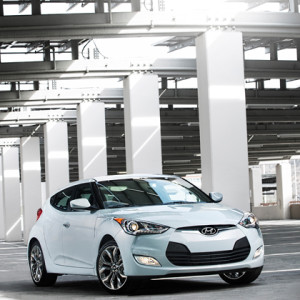2014 is a year for major milestones, it would seem. It’s the fiftieth anniversary of the
Beatles’ first American appearance, and the twenty-fifth anniversary of a car that took the
world similarly by storm, the Mazda Miata. The MX-5 Miata has become one of the most
significant enthusiast cars of a generation. One of the most telling bits of Miata
trivia–it’s unusual to run into an automotive journalist who hasn’t owned at least one.
The Miata was unveiled at the Chicago Auto Show on February 9, 1989. Intended as a re-
imagining of the pure, simple sports roadster, the car has never deviated from that path,
and the numbers support this strategy. It may be a niche car, but Mazda has sold over
920,000 of them worldwide, and racked up hundreds of automotive awards along the way. The
car single-handedly revived the two-seat roadster segment, and without it there’s a good
chance we wouldn’t have gotten the Honda S2000, Toyota MR2-S, Mercedes SLK, Porsche Boxster,
BMW Z3, Pontiac Solstice or Audi TT.
The Miata first hit the streets with a 1.6 liter, 116-horsepower four-cylinder engine,
simple styling with pop-up headlights that was vaguely reminiscent of the Lotus Elan, and a
standard five-speed manual transmission. An automatic was optional, but unlike the average
car, was not a popular add-on. The little roadster featured a fully independent double-
wishbone suspension at all four corners and four-wheel disc brakes, an unusual option on a
small car at the time. The lightweight soft top could be folded with one hand, and weight
was kept to just over 2100 pounds. It was an instant success, and at a starting price of
$13,800, it was affordable as well as fun.
In 1999, the second generation lost the covered headlamps, but gained a more powerful 1.8
liter four that boosted output to 140 horses. Mazda took care to retain the Miata’s
athletic yet non-aggressive look and feel, tuning the exhaust system and intake for the
proper sound. A glass rear window improved interior comfort as well. Special editions
included the 10-year anniversary model in 1999, which featured a Torsen limited-slip
differential, six-speed manual transmission and sport-tuned Bilstein shocks.
The Miata entered its third generation in 2005, and became more substantial without getting
fat. A 2.0 liter four-cylinder engine is now the base engine, featuring 170 horsepower and
a choice of five- or six-speed manual transmissions or a six-speed automatic. Improved ride
control and stability control are now available, as is a retractable hardtop.
The next-generation Miata is due soon. We can’t wait to see where evolution takes Mazda’s
awesome little roadster next.







